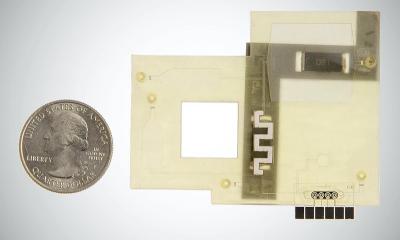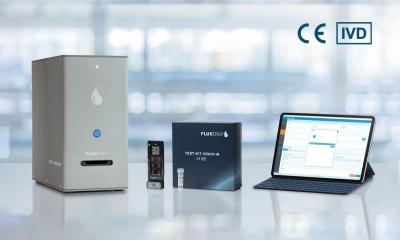Article • Laboratory adoption
POCT – a critical review and perspective
Walter Depner
Not long ago, POCT was a specialist diagnostic discipline used by only few laboratory staff. This has changed considerably over recent years. Initially, the main focus had been on determining electrolytes, blood gases, blood clotting and blood count, but further parameters, such as kidney function, cardiac enzymes, urine tests and testing for autoimmune diseases have now been added. Whilst the applications for POCT are continuously being expanded, the procedures have become more effective, knowledge is increasing, materials and devices are refined and the exchange and processing of data has improved significantly. The much shorter TAT (turn-around-time) compensates for existing procedural disadvantages of the procedure, such as higher costs, lower sensitivity and specificity. A laboratory can never match this shorter TAT – POCT results, which typically take five to 15 minutes. The procedure also offers flexibility, independent of whether it is utilised in a surgery, in a patient’s home or at an accident scene. Three very different examples illustrate the difficulties involved:
How useful is POCT management for chronic or acute illnesses such as Diabetes mellitus for instance?
In diabetology, the HbA1c value is internationally recognised as a long-term marker. According to the German Diabetes Society, a Diabetes diagnosis is confirmed if the value is ≥ 6.5%, whilst a value of < 5.7% means Diabetes can be ruled out. In practice, this requires measurements to be of very high precision.
Another issue is comparability on an international level. The NGSP (National Glycohaemoglobin Standardisation Programme) was introduced to improve the comparability of HbA1c values. The results continue to be indicated in percentage, whilst the IFCC unit is mmol/mol. Using reference materials, the IFCC (International Federation of Clinical Chemistry and Laboratory Medicine) developed a reference method to guarantee that measurement results can be compared to recognised reference values.
Despite standardisation of the measuring procedures it transpired that, out of seven certified HbA1c POCT Systems, only four complied with the required +/- 6% deviation from the target value. In Germany for instance, the General Medical Association allows a deviation of max. +/- 18% from the target value, whilst other countries, e.g. Switzerland, Norway and the USA, only allow deviations of 6%. The situation is compounded by the fact that there is no homogeneity for the matrix in ring trial samples, such as the use of fresh whole blood.
Requirements for POCT during laboratory adoption
Without IT-networking of POCT devices/systems it is not possible to ensure documentation obligations are met, or only with a large amount of manual effort. Networking of all POCT devices is essential to ensure that all specifications are met. It must also be ensured that POCT results are entered into the patient file. A further requirement is the assurance of meaningful statistics for laboratories, as well as hospitals. Along with purely technical procedures, networking therefore also necessitates the introduction of organisational structures to guarantee compliance with all legal regulations. The issue of liability is often also underestimated in the context of POCT. The use of POCT creates very complex liability constellations, and particularly so in hospitals, as areas of responsibility overlap between doctors, hospitals and manufacturers.
The doctor must be able to rely on receiving information about the characteristics of a product, its application and risks from the respective manufacturer to ensure appropriate use. Therefore, the manufacturer is liable for potential malfunctioning of medical devices, and doctors may be jointly liable in cases where they might have been able to detect any such malfunctioning.
The third example is often still considered a marginal issue:

POCT in high-performance sports
Measuring processes in sports are not carried out in an emergency context, even though POCT attracted considerable interest from the start in the field of high-performance sports and sports science. The best-known type of measurement is lactate measurement to determine endurance performance. However, many other parameters that allow precise measuring of body functions are often also determined with the help of POCT, although some of these do not belong in the realm of traditional medicine.
One decisive reason for POCT in sports is that it can be used without the need for medical and laboratory staff, and with capillary blood samples and mobile devices. However, proper utilisation of the existing medical potential of this new type of POCT measurement requires the necessary technical and organisational prerequisites, such as standardised blood sample collection (fasting blood sample for instance) and the combined evaluation of many different measurement data etc.
Under appropriate conditions, a single POCT measurement can certainly become part of a diagnostic system. A ‘normal’ laboratory diagnosis is usually based on a measurement; the diagnosis of a competitive athlete can be based on many different measurement results obtained not only in a sports-scientific context. Apart from the analytes examined, this also depends on the questions involved. POCT is a topic that continues to have much potential, but which equally throws up a lot of questions that need answers.
27.10.2017











